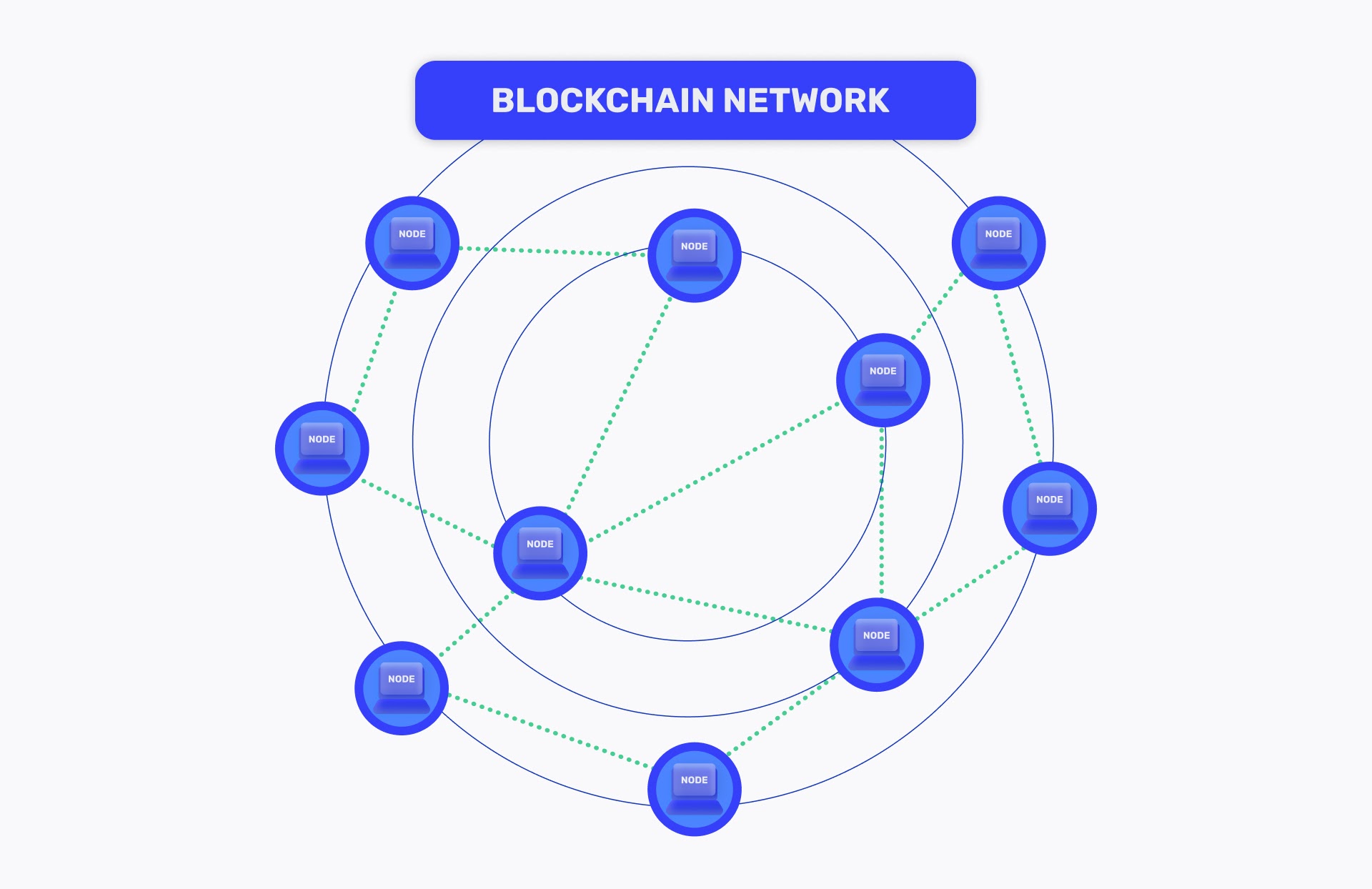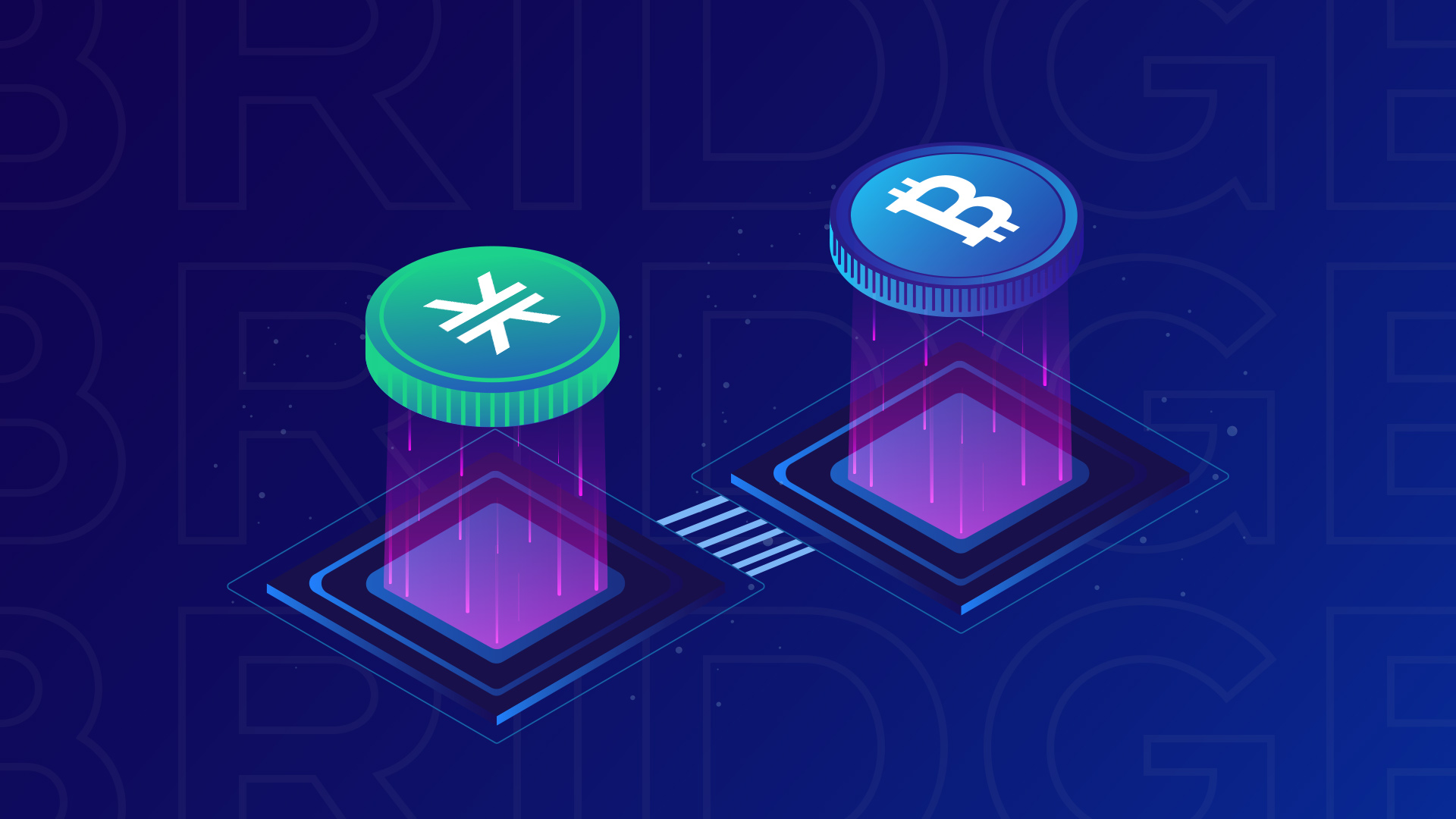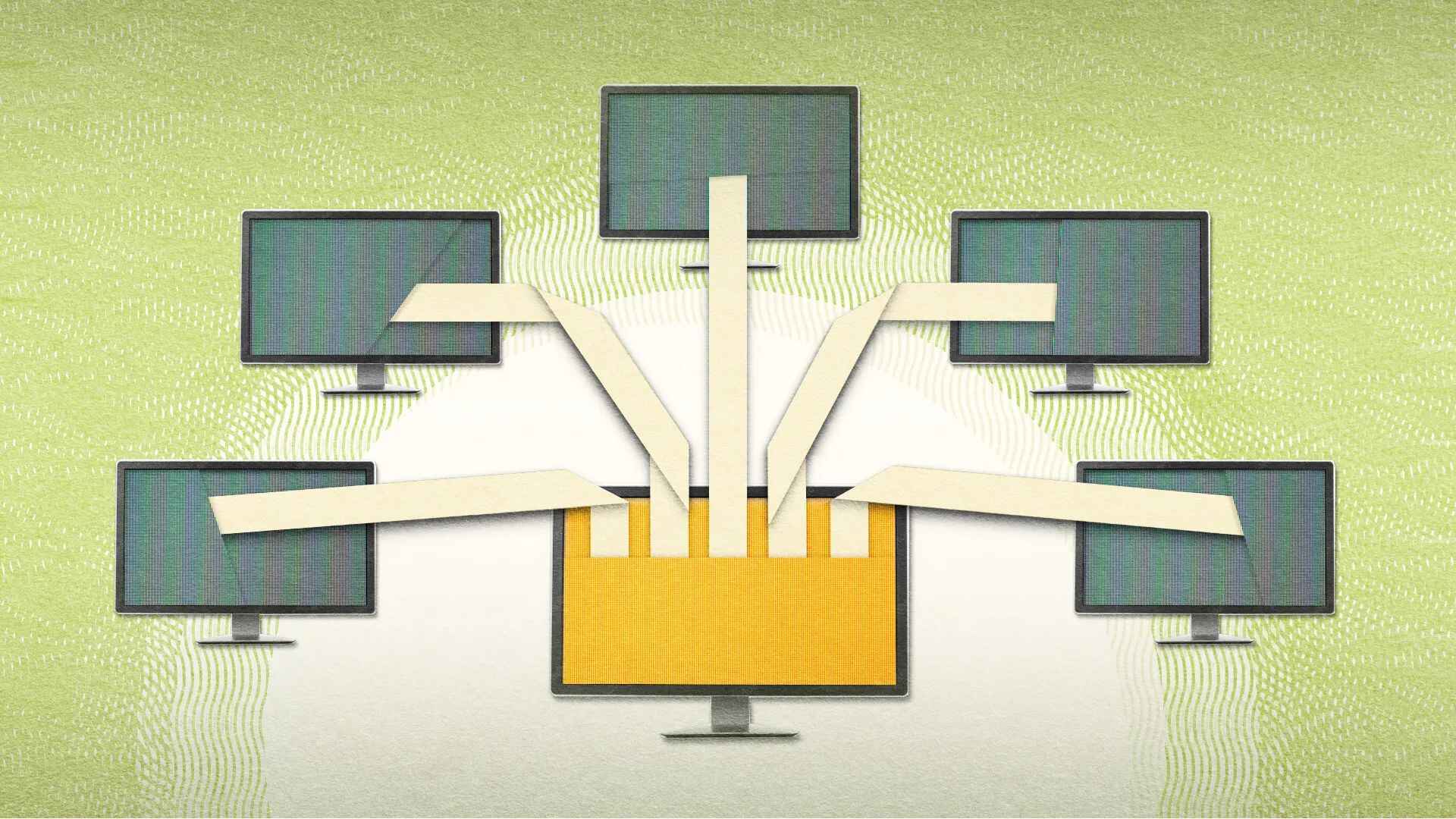Introduction
Blockchain technology has revolutionized the way we conduct transactions and secure data. Its decentralized and transparent nature has made it highly sought after in various industries. However, not all blockchains are created equal. There are different types of blockchains, each with its unique characteristics and use cases. Understanding these different types can help us grasp the full potential of this transformative technology.
At its core, a blockchain is a digital ledger that records transactions across multiple computers. Each transaction is stored in a “block,” which is then linked to the previous block, creating a chain of information. While this basic structure remains the same, there are several variations and adaptations, each serving specific purposes.
In this article, we will explore the different types of blockchains, including public, private, consortium, permissioned, permissionless, centralized, decentralized, and hybrid blockchains. We will also delve into consensus mechanisms such as Proof of Work (PoW), Proof of Stake (PoS), Delegated Proof of Stake (DPoS), Practical Byzantine Fault Tolerance (PBFT), Directed Acyclic Graph (DAG), and Hashgraph.
By gaining a comprehensive understanding of these blockchain types and consensus mechanisms, we can better appreciate their applications in various industries, such as finance, supply chain management, healthcare, and beyond.
Public Blockchain
A public blockchain is an open and permissionless network where anyone can participate in the network, validate transactions, and create new blocks. It is decentralized, meaning that no single entity has control over the network. This type of blockchain is best known for its application in cryptocurrencies, such as Bitcoin and Ethereum.
Public blockchains rely on distributed consensus mechanisms, such as Proof of Work (PoW) or Proof of Stake (PoS), to validate and add new transactions to the blockchain. These consensus mechanisms ensure the security and integrity of the network by requiring participants to solve complex mathematical puzzles or stake their cryptocurrency to validate transactions.
One of the key characteristics of a public blockchain is its transparency. All transactions recorded on the public blockchain are visible to anyone in the network. This transparency allows for trustless transactions and prevents double-spending or fraud. Participants can verify each transaction without the need for intermediaries.
Public blockchains also offer high levels of security. The decentralized nature of the network makes it resistant to hacking or tampering. The consensus mechanisms used in public blockchains ensure that malicious actors cannot manipulate the transaction history or alter the state of the network.
However, public blockchains do have some limitations. The transparency and immutability of the blockchain can be seen as a disadvantage in certain use cases where privacy is a concern. Additionally, the PoW consensus mechanism used in some public blockchains requires a significant amount of computational power and energy consumption.
Despite these limitations, public blockchains have found applications beyond cryptocurrencies. They can be used for decentralized applications (dApps), smart contracts, and even voting systems. The open nature of public blockchains encourages innovation and collaboration, making them a powerful tool for disrupting traditional industries.
Private Blockchain
A private blockchain, also known as a permissioned blockchain, is a closed network where only selected participants have access to write and validate transactions. Unlike public blockchains, private blockchains are not open to the public, and the network is controlled by a central authority or a consortium of organizations.
Private blockchains are often used by businesses and organizations to streamline operations, improve transparency, and enhance security. These blockchains are typically deployed within a specific industry or enterprise, where participants can trust each other and have a shared interest in maintaining the accuracy of the blockchain.
One of the primary advantages of private blockchains is the ability to maintain privacy and confidentiality. Unlike public blockchains, where all transactions are visible to anyone in the network, private blockchains allow for selective disclosure. Participants can decide who has access to the transaction data, ensuring that sensitive information is only shared with the relevant parties.
Another benefit of private blockchains is scalability. Since the network is closed and controlled, the consensus mechanism can be more efficient and require fewer resources compared to public blockchains. This allows for faster transaction processing and higher throughput, making private blockchains ideal for enterprise-level applications.
However, private blockchains also introduce certain trade-offs. The centralized nature of these blockchains can undermine one of the key principles of blockchain technology, which is decentralization. Participants must trust the central authority or consortium to maintain the integrity of the network.
Additionally, the governance of private blockchains can be complex. Consensus mechanisms, access controls, and decision-making processes are typically determined by the central authority or consortium, which may lead to potential conflicts of interest or power imbalances.
Despite these limitations, private blockchains have proven to be valuable in industries such as finance, supply chain management, and healthcare, where data privacy and regulatory compliance are crucial. By leveraging blockchain technology, organizations can enhance collaboration, streamline processes, and increase trust among participants.
Consortium Blockchain
A consortium blockchain is a type of blockchain that combines the features of both public and private blockchains. In a consortium blockchain, the network is governed by a group of trusted organizations or entities rather than a single central authority. These organizations come together to form a consortium and collectively manage the blockchain network.
Unlike private blockchains where access is limited to selected participants, a consortium blockchain allows a predefined set of organizations to validate transactions and maintain the blockchain. This shared governance model ensures that no single entity has complete control over the network, promoting transparency and trust among the consortium members.
Consortium blockchains are typically used in industries where multiple organizations need to collaborate and share data securely, such as supply chain management or healthcare. The consortium members can collectively agree on the rules and policies governing the blockchain, such as consensus mechanisms, data privacy, and access controls.
One of the key advantages of a consortium blockchain is its ability to strike a balance between privacy and decentralization. While private blockchains offer enhanced privacy, they rely on a single central authority, which can introduce potential vulnerabilities. Consortium blockchains allow for multiple trusted entities to participate in the network, ensuring decentralization and reducing the risk of a single point of failure.
Additionally, consortium blockchains provide scalability benefits compared to public blockchains. Since the number of participants in the consortium is predefined and known, the consensus mechanisms can be tailored to the specific needs of the network. This allows for faster transaction processing and improved scalability compared to public blockchains.
However, consortium blockchains also face challenges. Governance and decision-making within the consortium can be complex and require careful coordination among the members. Ensuring that all participants have an equal say in the network’s rules and policies is crucial to maintain trust and fairness among the consortium members.
Overall, consortium blockchains offer a middle ground between public and private blockchains, providing a secure, transparent, and collaborative environment for organizations to share data and conduct business transactions. The shared governance model of consortium blockchains makes them a valuable tool for industries that require collaboration among multiple entities while maintaining data privacy and security.
Permissioned Blockchain
A permissioned blockchain, also known as a private blockchain, is a type of blockchain that restricts access to the network and transaction verification process to a limited number of trusted entities. Unlike public blockchains, permissioned blockchains do not allow just anyone to join the network and participate in consensus.
In a permissioned blockchain, access control is enforced through various mechanisms such as whitelisting, invitations, or membership criteria. Only approved participants who have been granted permission can read and write transactions on the blockchain. This restricted access ensures that all participants in the network are known and trusted.
Permissioned blockchains are often used in industries and applications where privacy, confidentiality, and regulatory compliance are critical. By limiting access to the network, organizations can maintain control over their data and ensure that sensitive information is only shared with authorized participants.
One of the advantages of permissioned blockchains is the increased efficiency and scalability compared to public blockchains. Since the network is restricted to a smaller number of participants, the consensus mechanisms can be more lightweight and require less computational power. This allows for faster transaction processing and higher throughput.
Additionally, permissioned blockchains offer greater control and governance to the participants. The consensus mechanisms and decision-making processes can be tailored to the specific needs of the network and the participating entities. This enables more efficient coordination and enables faster upgrades or changes to the blockchain protocol.
However, permissioned blockchains also face some challenges. The limited number of participants can reduce the level of decentralization and introduce potential single points of failure or collusion among the participants. Maintaining trust and ensuring fair governance among the participants is critical to prevent abuse of power or centralization within the network.
In summary, permissioned blockchains provide a controlled and secure environment for organizations to collaborate, share data, and conduct transactions. The restricted access and tailored governance mechanisms make permissioned blockchains well-suited for use cases where privacy, regulatory compliance, and scalability are crucial factors.
Permissionless (Public) Blockchain
A permissionless blockchain, also known as a public blockchain, is a decentralized network where anyone can join, validate transactions, and create new blocks without needing approval from a central authority. This type of blockchain allows for open participation, transparency, and censorship resistance.
In a permissionless blockchain, anyone can become a participant, also known as a node, by downloading the necessary software and connecting to the network. Participants can verify the validity of transactions and contribute to the consensus mechanism, such as Proof of Work (PoW) or Proof of Stake (PoS).
One of the defining characteristics of permissionless blockchains is their openness. Anyone can access the blockchain’s data, verify transactions, and participate in the network without requiring permission. This transparency fosters trust and enables trustless transactions without the need for intermediaries.
Permissionless blockchains also offer high levels of security. Their decentralized nature makes them highly resistant to attacks and tampering. Since every transaction is recorded on the blockchain and validated by multiple participants, it becomes nearly impossible to alter or manipulate the transaction history.
However, permissionless blockchains also have their challenges. The openness and decentralization that grant them their strength can sometimes lead to scalability and efficiency issues. As more participants join the network, transaction processing can become slower and more resource-intensive.
Furthermore, the consensus mechanisms used in permissionless blockchains, such as PoW, require significant computational power and energy consumption. This energy-intensive process has raised concerns about its environmental impact and sustainability.
Despite these challenges, permissionless blockchains have gained widespread adoption and are most commonly associated with cryptocurrencies like Bitcoin and Ethereum. They have revolutionized various industries by enabling decentralized applications, smart contracts, and secure peer-to-peer transactions without the need for intermediaries.
Overall, permissionless blockchains offer a decentralized and open ecosystem that promotes trust, transparency, and censorship resistance. They empower individuals and organizations to participate in a global network without relying on a central authority, paving the way for innovation and disruption in various domains.
Centralized Blockchain
A centralized blockchain, also known as a private or closed blockchain, is a type of blockchain where the control and decision-making power lie with a central authority or organization. Unlike decentralized or permissionless blockchains, which strive for decentralization and open participation, a centralized blockchain is governed by a single entity.
In a centralized blockchain, the central authority has complete control over the network, including the validation of transactions and the addition of new blocks. This authority can dictate the rules, governance, and access controls of the blockchain according to their needs and requirements.
The key advantage of a centralized blockchain is the efficiency and scalability it offers. Since the central authority has control over the consensus process, it can optimize the blockchain to perform at high speeds and handle a large number of transactions. This makes centralized blockchains ideal for applications that require fast and efficient processing, such as payment systems in financial institutions.
Furthermore, centralized blockchains provide enhanced security and privacy. The central authority can implement robust security measures and access controls to protect data and prevent unauthorized use. This level of control allows for stronger enforcement of regulatory compliance and management of sensitive information.
However, the centralization of decision-making and control also brings certain drawbacks and concerns. The trust placed in a single entity or authority introduces a single point of failure. If the central authority becomes compromised or corrupt, the entire blockchain network’s integrity and security may be compromised.
Moreover, the lack of openness and transparency in centralized blockchains can create an information asymmetry between the central authority and the participants. Participants must place trust in the central authority without being able to independently verify or validate the blockchain transactions. This undermines the key principle of decentralization and immutability that blockchain technology aims to achieve.
Centralized blockchains are most commonly used within organizations or industries where a high degree of control and privacy is required. They provide a balance between efficiency, security, and centralized governance at the expense of open participation and transparency.
Overall, centralized blockchains offer specific advantages in terms of scalability, security, and control. However, their centralized nature raises concerns about trust, transparency, and the potential for abuse of power. Depending on the use case and requirements, organizations may choose either a centralized or decentralized approach when implementing blockchain technology.
Decentralized Blockchain
A decentralized blockchain is a type of blockchain that operates without a central authority or control. It is designed to distribute power, decision-making, and transaction verification among a network of participants, known as nodes. Unlike centralized or permissioned blockchains, decentralized blockchains aim to eliminate single points of failure, enhance security, and promote trust through consensus mechanisms.
In a decentralized blockchain, all participants in the network have equal authority and can validate transactions and add new blocks to the chain. This peer-to-peer network structure ensures that no single entity can dictate the rules or tamper with the transaction history, fostering a high level of transparency and immutability.
Decentralized blockchains rely on consensus mechanisms, such as Proof of Work (PoW) or Proof of Stake (PoS), to achieve agreement on the state of the blockchain. These mechanisms require participants to contribute computational resources or stake cryptocurrency to validate transactions and secure the network.
One of the key advantages of decentralized blockchains is the enhanced security they provide. Since the control is distributed among multiple nodes in the network, it becomes significantly more challenging for malicious actors to compromise the integrity of the blockchain. The decentralized nature of the network also makes it resistant to censorship and tampering.
Another benefit of decentralized blockchains is the trust they enable among participants. By removing the need for central authorities or intermediaries, decentralized blockchains promote trustless transactions and eliminate the need to rely on third parties for verification. Participants can independently verify the accuracy and validity of transactions through the consensus mechanism.
However, decentralized blockchains also come with certain challenges. The consensus mechanisms used in decentralized blockchains, such as PoW, can be resource-intensive and require significant energy consumption. This has led to concerns about the environmental impact and scalability of decentralized blockchains.
Additionally, the decentralization of decision-making and governance can lead to slower transaction processing times and potential disagreements among participants. Consensus may take longer to reach, and achieving unanimous decisions can be challenging in networks with a large number of participants.
In summary, decentralized blockchains offer increased security, transparency, and trust by distributing control among a network of participants. They eliminate the need for central authorities and intermediaries, providing a peer-to-peer infrastructure for secure and trustless transactions. Despite the challenges they face, decentralized blockchains have the potential to revolutionize various industries and promote inclusive and transparent systems.
Hybrid Blockchain
A hybrid blockchain is a combination of elements from both public and private blockchains. It seeks to leverage the benefits of both types of blockchains and overcome their limitations to create a more flexible and versatile blockchain network.
In a hybrid blockchain, certain aspects of the network are public, while others are private or restricted. This allows for selective transparency and privacy based on the needs of the participants and the specific use case. Participants can decide which data is publicly accessible and which data is kept private within the network.
The hybrid blockchain model is often employed in situations where certain aspects of the blockchain need to be shared and accessible to the public, while other data or transactions may require heightened privacy or exclusivity. This combination caters to the varying requirements and regulatory compliance of different industries and organizations.
One of the key advantages of hybrid blockchains is their flexibility. Organizations can choose to have public-facing elements that enhance transparency and trust for external stakeholders, such as customers, while maintaining control over sensitive internal data. This allows for secure collaboration and efficient supply chain management, among other applications.
Additionally, hybrid blockchains offer scalability benefits. Public-facing components can benefit from the scalability and distributed consensus mechanisms of public blockchains, while private or restricted parts of the network can operate more efficiently and securely with a smaller number of trusted participants.
However, managing a hybrid blockchain can be complex. Organizations must carefully design and implement the rules and protocols that govern the transparency and privacy features of the blockchain. This involves establishing clear access controls and mechanisms to ensure that the right participants have access to the relevant portions of the blockchain.
Furthermore, hybrid blockchains require careful consideration of the interoperability between the public and private components. Ensuring seamless integration and communication between the different parts of the blockchain is crucial to maintain the integrity and functionality of the overall network.
In summary, hybrid blockchains combine the advantages of both public and private blockchains, offering flexibility, scalability, and tailored transparency. By allowing for selective transparency and privacy, hybrid blockchains provide a customizable solution that can meet the diverse needs of different industries and organizations.
Proof of Work (PoW)
Proof of Work (PoW) is a consensus mechanism used in blockchain networks to verify and validate transactions. It is primarily associated with Bitcoin, the pioneering cryptocurrency, but is also used in various other blockchain platforms. PoW requires participants, known as miners, to solve complex mathematical puzzles to secure the network and add new blocks to the blockchain.
In the PoW consensus mechanism, miners compete with each other to solve the mathematical puzzle by using their computational power. The puzzle requires significant computational effort, and the first miner to solve it gets the privilege to add a new block of transactions to the blockchain.
Once a miner solves the puzzle, other miners can quickly verify the solution. This verification process ensures that the proposed block is legitimate and adheres to the predefined rules of the blockchain network. The solution is then added to the blockchain, and the miner receives a reward, typically in the form of cryptocurrency.
One of the key benefits of PoW is its security. The computational effort required to solve the puzzles makes it computationally expensive and time-consuming for malicious actors to manipulate the blockchain. This makes it highly secure against attacks and ensures the immutability of the transaction history.
Another advantage of PoW is its decentralized nature. The consensus mechanism enables a distributed network of miners to collectively validate transactions and secure the blockchain, avoiding the need for a central authority. This decentralization prevents a single point of failure and allows for censorship resistance.
However, PoW does have some drawbacks. Firstly, it is energy-intensive and requires a significant amount of computational power. The process of solving the puzzles consumes substantial electricity, leading to concerns about its environmental impact and sustainability.
Additionally, the energy-intensive nature of PoW can increase transaction confirmation times and limit the scalability of the blockchain network. As more miners join the network, competition for solving the puzzles becomes tougher, leading to longer block confirmation times.
Despite these limitations, PoW has proven to be a reliable and secure consensus mechanism. It has played a significant role in establishing trust and immutability in blockchain networks, especially in early cryptocurrency implementations like Bitcoin. However, the energy consumption and scalability challenges have led to the exploration of alternative consensus mechanisms, such as Proof of Stake (PoS) and Delegated Proof of Stake (DPoS), which aim to address these limitations.
Proof of Stake (PoS)
Proof of Stake (PoS) is a consensus mechanism used in blockchain networks to validate and add new blocks to the blockchain. Unlike Proof of Work (PoW), which relies on computational work, PoS assigns the mining power to participants based on their stake, or ownership of cryptocurrency, in the network.
In a PoS system, instead of miners competing to solve complex puzzles, participants are chosen to validate transactions and create new blocks based on the number of coins they hold and are willing to “stake” as collateral. The more coins a participant holds, the higher their chances of being selected to validate a block and earn the associated rewards.
One of the key advantages of PoS is its energy efficiency compared to PoW. Since PoS does not require participants to solve computationally expensive puzzles, it consumes significantly less energy. This makes PoS a more sustainable alternative and reduces the environmental impact associated with traditional mining operations.
Another benefit of PoS is its scalability. In PoW systems, as more miners join the network, competition increases, leading to longer block confirmation times. In PoS, block selection is based on the participants’ stake, allowing for faster transaction verification and higher network throughput.
PoS also introduces a stronger incentive for participant engagement and network security. Participants have a financial interest in maintaining the security and integrity of the blockchain network, as any malicious behavior or attempt to compromise the network could result in the loss of their staked coins.
However, PoS is not without its challenges. One of the main concerns is the “nothing-at-stake” problem. In PoS, there is a possibility that participants could be incentivized to validate multiple conflicting blocks, as there is no cost associated with staking multiple chains. This could lead to network instability and potential attacks.
To mitigate this issue, different variations of PoS, such as delegated PoS (DPoS) and practical Byzantine fault tolerance (PBFT), have been developed. These variations introduce mechanisms where participants are selected to validate blocks through voting or reputation-based systems, reducing the risk of malicious behavior.
In summary, PoS is an energy-efficient and scalable consensus mechanism that relies on participants’ stake in the network to validate transactions and maintain the security of the blockchain. While it addresses some of the challenges of PoW, further research and development are ongoing to enhance PoS systems to ensure their security, fairness, and long-term stability.
Delegated Proof of Stake (DPoS)
Delegated Proof of Stake (DPoS) is a consensus mechanism used in blockchain networks that aims to combine the benefits of decentralization and scalability. DPoS builds upon the Proof of Stake (PoS) concept by introducing a reputation-based voting system where participants delegate their voting rights to trusted nodes, known as “delegates,” who are responsible for validating transactions and creating new blocks.
In a DPoS system, participants in the network have the ability to vote for delegates who will represent their interests in the block validation process. Votes are typically proportional to the stake held by each participant, giving greater influence to those who hold more coins in the network.
Delegates play a crucial role in DPoS systems as they are selected by the voting participants to verify transactions and create the blocks. Delegates take turns sequentially, with each given a specific timeframe, referred to as a “block producer slot,” to validate transactions and add a new block to the blockchain.
One of the primary advantages of DPoS is its scalability. By having a limited number of delegates responsible for block validation, DPoS can achieve fast transaction confirmation times and high throughput. This makes DPoS particularly suitable for applications that require efficient and scalable blockchain networks.
DPoS also introduces a level of accountability and governance to the network. Since delegates are chosen through a voting process, they are accountable to the participants who have delegated their voting rights. This voting-based system ensures that delegates act in the best interests of the network and are incentivized to maintain its integrity.
Furthermore, DPoS enhances the security of the network by reducing the risk of concentration of power. In traditional PoS systems, participants with significant stake can monopolize the block validation process. In DPoS, the voting system allows for more decentralized decision-making, mitigating the influence of a single entity or group of participants.
However, DPoS also faces criticisms. Some argue that the reliance on a limited number of delegates compromises the overall decentralization of the network. Additionally, the voting process can be influenced by participants with a large stake, potentially leading to centralization or the creation of delegate cartels.
To address these concerns, some DPoS implementations have introduced mechanisms such as vote decay, term limits for delegates, or randomization of block producer selection to ensure a more equitable and secure system.
In summary, DPoS offers a scalable and efficient consensus mechanism that combines the benefits of decentralization and accountability. By allowing participants to delegate their voting rights and selecting trusted delegates, DPoS ensures fast transaction processing, network integrity, and a more inclusive governance model.
Practical Byzantine Fault Tolerance (PBFT)
Practical Byzantine Fault Tolerance (PBFT) is a consensus mechanism designed to enable distributed systems to reach agreement in the presence of faulty or malicious nodes. Originally proposed by Miguel Castro and Barbara Liskov in 1999, PBFT is widely used in blockchain networks that require fast finality and high throughputs.
In a PBFT system, nodes are divided into two groups: replicas and clients. Replicas are responsible for maintaining a consistent ledger and validating transactions, while clients initiate requests and interact with the replicas. PBFT operates using a series of rounds, where each round consists of several stages: pre-prepare, prepare, commit, and reply.
During the pre-prepare stage, a client sends a transaction proposal to all replicas. Replicas then exchange messages to reach a consensus on the proposed transaction. In the prepare stage, replicas validate the request and broadcast a prepare message to indicate their readiness to commit the transaction. Once a replica receives prepare messages from a two-thirds majority of replicas, it moves to the commit stage and broadcasts a commit message.
Once a replica collects commit messages from a two-thirds majority of replicas, it considers the transaction as committed. Finally, the replica sends a reply to the client, indicating the successful completion of the transaction. A client can wait for a specified number of replies before considering the transaction finalized.
PBFT provides several benefits, including high fault tolerance and low latency. By requiring a two-thirds majority agreement among replicas, PBFT can tolerate up to one-third of malicious or faulty nodes in the network. This makes PBFT suitable for applications where Byzantine faults, such as malicious attacks or node failures, are a concern.
Additionally, PBFT offers fast finality compared to other consensus mechanisms, making it well-suited for applications that require rapid transaction confirmation and low latency. PBFT achieves this by leveraging the message exchange and consensus process among replicas, eliminating the need for resource-intensive mining or computational puzzles.
However, PBFT also has limitations. It requires a known and fixed number of replicas, which can limit the scalability and flexibility of the network. Furthermore, PBFT relies on a high level of network connectivity, as messages need to be exchanged among replicas. In environments with high network latency or unreliable connections, the performance of PBFT can be affected.
Overall, PBFT is a practical consensus mechanism that enables Byzantine fault-tolerant distributed systems. Its high fault tolerance, fast finality, and low latency make it suitable for various applications, particularly those requiring rapid agreement and resistant to malicious attacks.
Directed Acyclic Graph (DAG)
A Directed Acyclic Graph (DAG) is a graph-based data structure used in certain blockchain implementations. Unlike traditional blockchain structures, which consist of linearly linked blocks, a DAG represents transactions or data as nodes connected by directed edges without creating a strict sequential order.
In a DAG-based blockchain, each transaction or data entry forms a node in the graph. Transactions are verified by referencing previous transactions, creating a directed edge from the source transaction to the new transaction or data entry. This structure allows for parallel processing and efficient scalability, as multiple transactions can occur concurrently.
One of the key advantages of DAG-based blockchains is their ability to handle a large number of transactions simultaneously. Since there is no strict serial ordering, transactions can be processed in parallel, reducing bottlenecks and improving the overall throughput of the blockchain network.
Furthermore, DAG-based blockchains can provide faster transaction confirmation times compared to traditional linear blockchain structures. In a DAG, transactions can be confirmed as soon as they have a certain number of approving transactions referencing them. This allows for near-instant transaction finality, making DAGs suitable for applications that require real-time transaction processing.
DAG-based blockchains also introduce the concept of “tangle,” where multiple branches of transactions can coexist and be validated simultaneously. This enables the network to handle a higher transaction volume and improves scalability compared to linear blockchains, which encounter limitations in transaction processing speed as the chain grows longer.
However, there are also challenges associated with DAG-based blockchains. One common concern is the potential for double-spending attacks. Since there is no global consensus mechanism like Proof of Work or Proof of Stake, attackers could try to create conflicting branches of transactions. Various consensus mechanisms and additional measures must be implemented to mitigate this risk.
Additionally, the complexity of managing a DAG-based blockchain can be higher compared to linear blockchains, especially when resolving conflicts between competing branches or maintaining a consistent view of the blockchain’s state. Ensuring the security and integrity of the network while validating transactions can be a more intricate task in DAG systems.
In summary, DAG-based blockchains provide a more scalable and parallel transaction processing approach compared to traditional linear blockchain structures. With near-instant finality and the ability to handle a large transaction volume concurrently, DAGs offer exciting possibilities for applications that require high throughput and real-time transaction capabilities. However, addressing challenges such as double-spending attacks and managing the complexity of the network remains critical for the successful adoption and implementation of DAG-based blockchain systems.
Hashgraph
Hashgraph is a distributed consensus algorithm that forms the basis of a decentralized ledger technology. Developed by Hedera Hashgraph, it aims to provide a highly efficient and secure framework for consensus in distributed systems.
Unlike traditional blockchain structures, Hashgraph employs a directed acyclic graph (DAG) to record transactions and maintain consensus. Each node in the network communicates and exchanges information through a gossip protocol to create a shared understanding of the transaction history.
One of the key advantages of Hashgraph is its high throughput. By utilizing a DAG structure, Hashgraph allows for parallel processing of transactions, enabling the network to handle a large number of transactions concurrently. This results in fast transaction confirmation times and high scalability.
Hashgraph also achieves consensus through a mechanism known as “gossip about gossip.” Nodes in the network exchange information about the transactions and the events that occurred in the network, allowing them to recreate the complete history of the transactions and reach a consensus on the order and validity of transactions.
Another significant feature of Hashgraph is its asynchronous Byzantine Fault Tolerance (aBFT). This means that Hashgraph can tolerate the presence of malicious nodes and still maintain consensus and security. By incorporating cryptographic signatures and voting mechanisms, Hashgraph ensures that malicious nodes cannot disrupt the integrity of the network.
Additionally, Hashgraph provides high fairness and fairness. Each node has equal opportunity to contribute to the consensus process, and the order of transactions is determined using a consensus timestamp system. This fairness and resilience against malicious attacks make Hashgraph an attractive option for applications that require trust, fairness, and security.
However, Hashgraph also has its challenges. One concern is the necessity for reliable network connectivity. Nodes in a Hashgraph-based network need to communicate and exchange information effectively to maintain consensus, and network interruptions or delays can impact the performance and overall functionality of the system.
Another challenge is the management of large-scale networks. As the number of nodes increases, the amount of communication and computation required for consensus can become more complex. Efficient protocols and algorithms must be in place to address scalability issues as the network grows.
In summary, Hashgraph offers a promising approach to distributed consensus with its high throughput, asynchronous Byzantine Fault Tolerance, and fairness. By utilizing a DAG structure and efficient gossip protocols, Hashgraph provides a secure and scalable framework for decentralized applications. However, considerations such as network connectivity and scalability management are vital for successful adoption and implementation of Hashgraph-based systems.
Conclusion
The world of blockchain technology is diverse and evolving, with various types of blockchains and consensus mechanisms serving different purposes and addressing distinct needs. From public and private blockchains to consortium and permissioned blockchains, each type has its own set of advantages, limitations, and applications.
Public blockchains, such as Bitcoin and Ethereum, provide open and transparent networks that foster trustless transactions and decentralization. They offer high security and immutability but can be energy-intensive and lack privacy in certain use cases.
Private and consortium blockchains introduce control and privacy by limiting access to a trusted set of participants. They are suitable for industries requiring data confidentiality and regulatory compliance. However, the centralized nature of these blockchains raises concerns about trust and fairness.
Permissionless blockchains provide an open environment for participants to validate transactions, promoting transparency and trust without relying on a central authority. They offer robust security, but scalability and energy consumption can be challenging.
Consensus mechanisms like Proof of Work (PoW), Proof of Stake (PoS), and Delegated Proof of Stake (DPoS) play a vital role in ensuring the integrity and security of blockchain networks. Each mechanism has its own benefits and trade-offs, such as energy efficiency, speed, scalability, and decentralization.
Other consensus mechanisms like Practical Byzantine Fault Tolerance (PBFT), Directed Acyclic Graph (DAG), and Hashgraph provide unique solutions to consensus and scalability challenges. PBFT offers high fault tolerance and low latency, DAG enables parallel transaction processing, and Hashgraph combines high throughput with fairness and security.
The choice of blockchain type and consensus mechanism depends on the specific requirements and objectives of the application or industry. It is crucial to evaluate factors such as scalability, privacy, security, decentralization, and energy efficiency when selecting the appropriate blockchain model.
As blockchain technology continues to advance, there will likely be further developments and innovations in blockchain types and consensus mechanisms. Understanding the different types of blockchains and their consensus mechanisms empowers individuals and organizations to harness the full potential of this transformative technology.

























